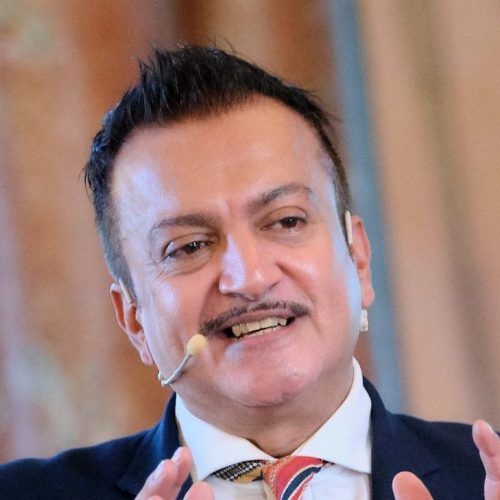Crimes against women and girls - the forgotten victims of the EU's new migration pact
Frankly Speaking
Chief Operating Officer and Chief Spokesperson of Friends of Europe
Give a thought to the burden encountered by many girls and women as they cross borders in the most dangerous of circumstances, placing their children and themselves at risk, only to be faced with one of the oldest crimes in the world – human trafficking.
Yet the headlines on migration are all too often about numbers and images of ‘aliens’ entering ‘civilised shores’. The overriding durable narrative has been about the impact on culture and values.
A phenomenal psychological default has been created in the minds of politicians and citizens about the migrant ‘other’ – demonising the threat to our way of life and drudging fear about limited public funds. It was ever thus from Enoch Powell’s famous “Rivers of blood” speech – remember that one, we’ve witnessed several versions of that since.
Let’s for a minute think, this is about ‘us’ and not ‘them’. Europe – and the world – are borne out of colonialism, and a story of migration. And yet, our current understanding consistently ignores the fact that the plundering of the world by Western powers has created the very circumstances that so many people are looking to escape.
Even at their arrival to reception centres, migrants and refugees remain in danger
“We are here because you were there” is a famous quote referencing the impact of the rampaging of Africa, India and South America just to mention a few.
Europe needs migrants. Given the continent’s ageing demographics, migrants are its lifeboat. Obviously, this isn’t a comfortable narrative on the ‘right’ but it’s about time the ‘left’ stopped reacting to the ‘right’ and present a positive story of migration based on facts.
Because the truth is that the dark side of migration isn’t the caricature of ‘alien invasion’ provided by those clinging to an idealised version of Europe that stinks of racism. The dark side of migration – or at least one of them – is the vulnerability of women and girls during their migratory journey to Europe. Gender-based violence is the most serious protection problem faced by migrant women and girls.
Reports have brought to light how women are taken by trafficking networks during their journey and face widespread sexual exploitation. In fact, even at their arrival to reception centres, migrants and refugees remain in danger. Shortages of police and guardians for unaccompanied children in several camps at Europe’s borders make them hotspots for exploitation and smuggling.
There is clearly a market for trafficking in Europe. Human traffickers operate a sophisticated operation across the region, often bypassing border officials, national and local police and on occasion the judiciary. They are canny and are usually one step ahead. It is organised crime at its worst.
There isn’t a major city in Europe that doesn’t benefit from human trafficking
Why has this issue received scant attention? Is its economic value such that its perpetrators can find the means to bypass all manner of immigration, criminal and legal processes?
There isn’t a major city in Europe that doesn’t benefit from human trafficking of women and girls; and across all classes mostly men benefit. Also, it is well known that the proceeds of trafficking underpin illegal arms, drugs and terrorism.
This is a sinister and dirty equation, and yet we in Europe largely turn a blind eye to it.
The new EU Pact on Migration and Asylum attempts to cover the complexity of these issues involved by taking a holistic policy view – yet the critical dimension of human trafficking and its relationship with arms, terrorism and drugs is missing, let alone the more important cost to the lost lives of women and girls.
In fact, Frontex, the European Border and Coast Guard Agency recently released its annual risk analysis, claiming to provide a comprehensive picture of the European Union’s migratory situation. Yet, missing from the picture – human trafficking and its significant impact on women and girls.
Women and girls have always been a focus of human trafficking across the world
The EU can get its act together by establishing a task force on the trafficking of women and girls. This would bring together relevant Commission departments and external agencies, including Frontex, the European Police Federation, Interpol, representatives of the judiciary and city mayors.
The ultimate goal of such a body would be to identify loopholes that are being exploited by human traffickers and find ways to better support women and girls at various points of the migration journey – not least through NGOs specifically funded for this purpose. This would address the imbalance of information on the impact of trafficking to more intelligence on traffickers.
Frontex should also undertake a bespoke risk analysis on the trafficking of women and girls. This would create the attention this issue deserves and focus resources in member states accordingly.
Both of these actions would send an important signal but also an intention to act.
Women and girls have always been a focus of human trafficking across the world – certainly for as far back as our histories go. Sadly, in these modern times, they lack a hashtag, a media spotlight or the means to advocate for themselves. We need to find a way to correct this pernicious facet of human behaviour.
You may also like…
- Friends of Europe: Beyond borders: migration, mobility and good governance in the Africa-EU partnership
- Europe’s World: The politics of migration in a (post) COVID-19 world, by Heaven Crawley
- Debating Europe: Was the migrant crisis a betrayal of EU values?
Stay informed
